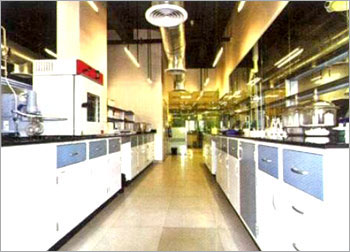Applying world-class technologies to achieve global benchmark quality
23 July, 2015 | The Machinist
ShareResponding to market trends, Aditya Birla Group's Pulp and Fibre Business has proactively c;reated a world-class technology organisation to support the rapidly evolving needs for future success.
Dr. Aspi N. Patel, Chief Technology Officer,
Pulp and Fibre Business, Aditya Birla Group
The Machinist
23 July 2015

The Pulp and Fibre Business within the Aditya Birla Group (ABG) is one of the largest manufacturers of cellulose-based synthetic fibres in the world. These fibres, produced from renewable resources, provide comfort and softness in garments and home furnishings, key values important to today's consumers. As the market has continued to expand, higher performance textile processing technologies and the technical requirements of new applications place ever increasing demands on product performance attributes and uniformity. Seeing these trends unfold, the Pulp and Fibre Business has proactively c;reated a world-class Technology organization to support the rapidly evolving needs for future success.
A state-of-the-art business Research and Development (R&;D) capability has been c;reated within the corporate R&;D infrastructure in Taloja outside of Mumbai. Here scientists develop new process and product technologies from laboratory through small-scale semi-works operations. These capabilities are supported with corporately shared analytical, process analysis and fundamental science resources. A small-scale manufacturing development capability in Kharach, Gujarat, allows effective scale-up and demonstration of new process and product technologies using equipment that is prototypic of commercial scale operations. Finally, the Textile Research and Applications Development Center (TRADC), located at the same site, provides capabilities to process new materials into a full range of garments and home furnishings using commercial processing equipment.
In parallel to creating these technology development capabilities, the Pulp and Fibre Business has developed, with the support of ABG Corporate Business Excellence, a Centre of Excellence to deploy the enhanced manufacturing operations, maintenance, control and quality systems required to meet the ever increasing customer requirements. One example of how these enhanced technology capabilities are being applied to achieve continuous improvement can be seen in our work to reduce overall process and product variation.
Continuous manufacturing processes with multiple steps and relatively long hold-up times, like that for cellulose fibre, present significant challenges to achieving uniform finished product quality. Variations in all steps can adversely affect product uniformity and the downstream performance in higher value articles. The finished product, such as fibre in the Viscose Staple Fibre process, can be periodically sampled and tested, but the amount of tested product is very small in relation to production. The customers, however, essentially test 100% of the finished product through their processing operations. In addition, fibre product specifications do not always fully capture all the diverse requirements of the down-stream applications. For example, fabric uniformity can be affected by both physical and chemical variations in the starting fibre, and the human eye is much more sensitive in discerning small deviations than typical fibre testing protocols.
Given these manufacturing challenges, and the need to continuously improve product quality and performance as customer requirements are raised, a paradigm shift in asset management and operations control is required.
An approach, which addresses many of these challenges, is "product-by-process". This approach is based on the premise that if each element of process material experiences the same process conditions, for example temperature, pressure, chemical composition and hold-up time, the final product should also be uniform in properties. Therefore the goal of this asset management process is to make each process step as uniform as possible. To implement this approach, a standard process is defined for each step, which, when put together, produce the desired final product requirements. Critical process parameters for each step are then controlled using Statistical Process Control (SPC) techniques to ensure on-aim conditions through the application of standardized corrective actions to address small process deviations. Finished product is deemed first quality when all the individual steps were in control during the fibre's manufacture. Finished product is periodically tested to ensure that the standard operating system continues to produce the desired product and that no new variables have been introduced.
A very important aspect of improvement is having the right metrics to drive desired behaviours. As the team adopted the product-by-process approach, new metrics like First-Pass-Yield (FPY-the % of time all critical process parameters are in control) and Uptime (the % of time the operations are mechanically operating to specifications) were introduced.
The advantage of these metrics is that they indicate to operations leadership the capability of deployed assets and how well they are being utilized to realize value. FPY and Uptime together provide a view of overall plant effectiveness. These coupled with internal product measures (fibre characteristics) and external customer feedback provide a comprehensive view of operating performance and product quality. The information also provides the inputs necessary to pursue continuous improvement.
When FPY and Uptime were introduced for the first time, the teams observed that the FPY / Uptime numbers were low. These data indicated, however, the significant opportunity for improvement and a means to track effective progress.
The Pulp and Fiber Business Centre of Excellence systematically developed, trained and coached the deployment of these manufacturing operations technologies, and instituted the comprehensive set of metrics to track the current process capability and improvement over time. These data clearly show areas requiring key process technology improvements for R&;D action including re-design of process equipment and enhanced control systems. Site technology resources are utilizing Six Sigma tools and approaches to address chronic process variation issues. Improvements in maintenance systems supporting continuous operations are being pursued by applying global best practices with support from ABG corporate experts. Finally, Marketing, working with TRADC, has instituted a continuous product performance feedback program to enable the manufacturing site to link process improvements with our customers' experience.
As a result of these integrated improvement actions, significant progress in process variation reductions, product uniformity improvement and enhanced customer performance have been achieved. Examples of improved internal performance and customer experience from one site are shown in the graphs.
The ABG Pulp and Fibre Business has developed an extensive technology and manufacturing operations improvement capability that is being applied to enhance product quality and performance and provide next generation products and processes. This ongoing quality excellence and product leadership journey builds on the business' strong manufacturing capabilities and global market reach to provide future opportunities for growth.






